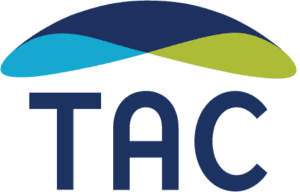Eight months into the global pandemic, I joined TAC and entered the national sphere. For the fifteen years prior, I had worked in policy and advocacy at the state level, trying to help create a comprehensive, community-based mental health system and make homelessness rare, brief, and nonrecurring.
As many had already pointed out by then, COVID-19 has dramatically exposed system failures, inadequate disability supports, and racial inequities. Yet the pandemic has also helped to propel large-scale policy changes and federal investments in housing and human services. In states and communities across the nation, our response to these historic developments will be measured by our ability to reach across differences and programs to coordinate our efforts.
This moment is fraught with unprecedented challenges, but at the same time presents a unique opportunity to address complex social problems — including homelessness — in a systemic way. It is now widely understood that positive individual and public health outcomes depend on safe, stable housing, a recognition reflected in the House America campaign launched this month by the U.S Department of Housing and Urban Development (HUD) and the U.S Interagency Council on Homelessness (USICH). As Housing Secretary Marcia Fudge explained, “It’s going to take government working at all levels to address homelessness and to guarantee housing as a right for every American… By leveraging American Rescue Plan resources and other federal funds through a Housing First approach, we can ensure more people have a safe, stable place to call home.” To learn more about new and expanded housing resources, check out the USICH American Rescue Plan Guide.
- Housing and homelessness resources include $21.6 billion in emergency rental assistance (in addition to $25 billion provided under the Consolidated Appropriations Act in December 2020); $5 billion for 70,000 Emergency Housing Vouchers; and another $5 billion in HOME funds to assist individuals and households who are homeless or at risk of homelessness through housing, rental assistance, supportive services, and non-congregate shelter until 2030.
- Mental health and substance use funding administered by the Substance Abuse and Mental Health Services Administration (SAMHSA) provided an additional $5 billion each for the Substance Abuse Prevention and Treatment Block Grant and the Community Mental Health Services Block Grant, to be expended by 2025. These services should be prioritized for underserved populations, such as people experiencing homelessness; people involved in the justice or child welfare system; people of color; LGBTQ individuals; and people in rural areas. New funds ($420M) for the expansion of Certified Community Behavioral Health Clinics will improve both access and quality for community mental health and substance use disorder treatment.
- Services and supports for at-risk students and children include $122 billion in the Elementary and Secondary School Emergency Relief (ESSER) fund, available through September 30, 2024, to address student needs exacerbated by the pandemic. Additionally, $800 million is dedicated to identifying children and youth experiencing homelessness, providing wraparound services, and administering the assistance needed for full participation in school activities. Fifteen billion dollars in supplemental Child Care and Development funding, administered by the Administration for Children and Families, will allow states to expand access to high-quality child care for low-income families. There’s also $1 billion for Head Start available through September 30, 2022.
And this list doesn’t even include billions of additional dollars dedicated to tackling food insecurity; providing cash assistance to TANF recipients, low-income renters, and others in need; or expanding Medicaid services and behavioral health crisis response systems — all of which will strengthen our work to prevent and end homelessness. For example, the American Rescue Plan provides states with a temporary increase for Medicaid Home and Community Based Services (HCBS) from April 1, 2021 through March 31, 2022 to enhance, expand, or strengthen HCBS. State savings generated by the increase are available until March 31, 2024. The American Rescue Plan also authorizes a new option for states to provide community-based mobile crisis intervention services through a Medicaid state plan or waiver, with 85-percent federal matching funds for the first three years. States and communities are aligning these opportunities with the planning and implementation of “988” as the national crisis response number to address suicide risk and other behavioral health crises.
The confluence of these new federal resources, significant policy reforms, and exacerbated need could be the impetus for behavioral health and homeless system transformation that makes a significant impact on long-term health outcomes and housing stability in our country.
Finding Our Focus
As the national response continues to unfold, TAC consultants are engaged with communities that are acutely aware of both the heightened needs and the enormity of resources being channeled to state and local governments. Specific challenges include workforce shortages, the pressures of rapid program design, and the mismatch between existing infrastructure and system capacity, relative to the scale of the funding and policy changes coming down the pike. Some states are using the opportunity for enhanced funding for HCBS to expand the use of technology to increase access to services and alleviate the stress on direct service staff by investing in standard activities, such as telehealth equipment and technology, but also more innovative “smart” technologies that support people to live independently.
One way to focus is by coordinating and directing this broad array of resources toward the needs of people who are experiencing homelessness — a relatively small but extremely vulnerable population that is highly impacted by structural racism and failed systems. Most systems already recognize the evidence regarding the costly trajectory and poor outcomes associated with homelessness for individuals and families, who are disproportionately people of color. Deeply subsidized affordable housing units, child care subsidies, flexible wraparound services , and shelter diversion programs are just a few approaches we know help individuals and families avoid the homeless system and the trauma, stress, and long-term consequences associated with homelessness.
In communities that are leading the way, common themes include interagency coordination; investment in infrastructure and administration; prioritizing racial equity; flexible funding with minimal access barriers; and using data to ensure racially equitable strategies. Through cross-system collaboration, we can effectively and expediently use the current influx of federal resources to improve housing stability, mental health and substance use services, family functioning, and child well-being for people experiencing or at risk of homelessness. Cooperation is crucial to maximize impact, as is full participation by people with lived expertise in the design and delivery of coordinated services.
If we can align, we can use this moment to end homelessness.



